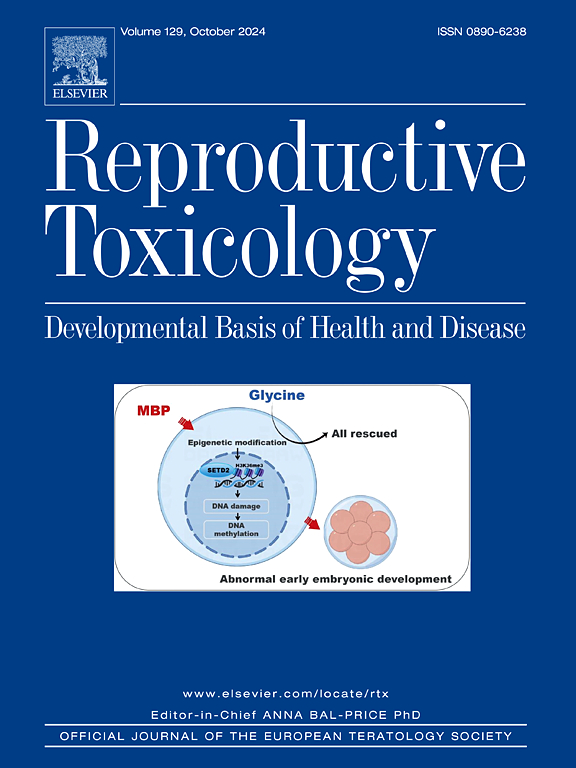Identification of endocrine disrupting chemicals targeting NTD-related hub genes during pregnancy via in silico analysis
IF 3.3
4区 医学
Q2 REPRODUCTIVE BIOLOGY
引用次数: 0
Abstract
Neural tube defects (NTDs) represent severe congenital malformations of the central nervous system with multifactorial etiology, involving intricate gene-environment interactions that remain incompletely characterized. Endocrine disrupting chemicals (EDCs) are exogenous substances with hormone-disrupting properties that are ubiquitous in our surroundings. These chemicals pose a significant threat to human health, contributing to a range of diseases. Pregnant women are particularly vulnerable to the effects of EDCs, as these substances can traverse the placental barrier and impact the development of both the placenta and fetus. This study utilized placental and fetal transcriptome data to identify hub genes associated with NTDs during pregnancy. By leveraging the Comparative Toxicogenomics Database (CTD), we predicted the EDCs targeting these hub genes and performed molecular docking to assess their interactions. Our findings revealed four hub genes (CTSC, FCER1G, ITGB2, and LYVE1) in NTDs, with 72 EDCs identified as their targets. Molecular docking demonstrated that atrazine, bisphenol A (BPA) and diuron exhibited stable affinity with the proteins encoded by hub genes. These findings provide new insights into the environmental endocrine disruptors that affect the development of NTDs during pregnancy.
求助全文
约1分钟内获得全文
求助全文
来源期刊

Reproductive toxicology
生物-毒理学
CiteScore
6.50
自引率
3.00%
发文量
131
审稿时长
45 days
期刊介绍:
Drawing from a large number of disciplines, Reproductive Toxicology publishes timely, original research on the influence of chemical and physical agents on reproduction. Written by and for obstetricians, pediatricians, embryologists, teratologists, geneticists, toxicologists, andrologists, and others interested in detecting potential reproductive hazards, the journal is a forum for communication among researchers and practitioners. Articles focus on the application of in vitro, animal and clinical research to the practice of clinical medicine.
All aspects of reproduction are within the scope of Reproductive Toxicology, including the formation and maturation of male and female gametes, sexual function, the events surrounding the fusion of gametes and the development of the fertilized ovum, nourishment and transport of the conceptus within the genital tract, implantation, embryogenesis, intrauterine growth, placentation and placental function, parturition, lactation and neonatal survival. Adverse reproductive effects in males will be considered as significant as adverse effects occurring in females. To provide a balanced presentation of approaches, equal emphasis will be given to clinical and animal or in vitro work. Typical end points that will be studied by contributors include infertility, sexual dysfunction, spontaneous abortion, malformations, abnormal histogenesis, stillbirth, intrauterine growth retardation, prematurity, behavioral abnormalities, and perinatal mortality.
 求助内容:
求助内容: 应助结果提醒方式:
应助结果提醒方式:


